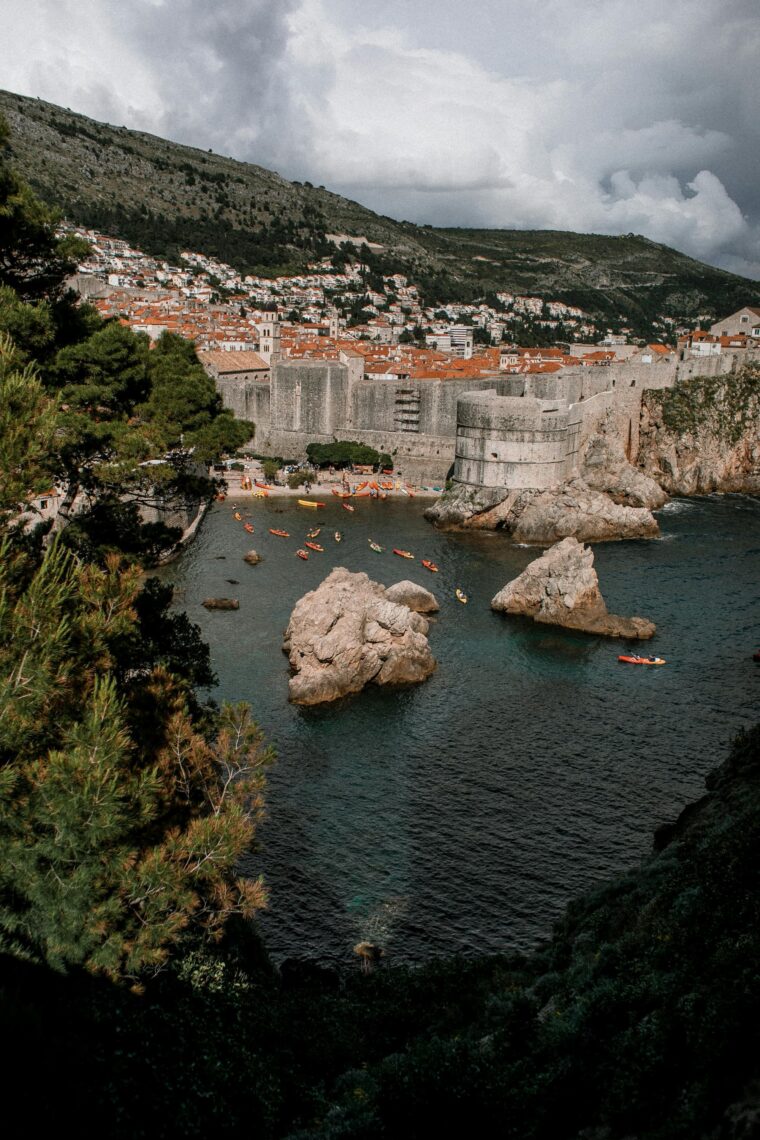- Diverse Natural and Cultural Attractions: Croatia offers breathtaking national parks, islands, and ancient cities that showcase its rich natural heritage and vibrant history. From UNESCO sites to hidden coves, there’s a unique experience waiting around every corner.
- Adventure and Sustainable Tourism: Outdoor activities like hiking, kayaking, and rock climbing highlight Croatia’s commitment to eco-conscious travel while providing adrenaline-fueled experiences. Each adventure is designed to preserve and protect the country’s diverse ecosystems.
- Culinary Delights and Practical Tips: The country’s cuisine, blending Mediterranean, Italian, and Balkan influences, offers flavors as diverse as its landscapes. Practical travel advice, including optimal visiting times and transport options, makes planning your Croatian journey a breeze.
KEY TAKEAWAYS
Introduction
The activities and experiences in Croatia are as diverse as its breathtaking landscapes—from medieval cities perched on Adriatic cliffs to sun-soaked islands framed by sapphire waters. Nestled between Central and Southeast Europe, Croatia dazzles with a rich tapestry of natural wonders, historical landmarks, and thrilling outdoor adventures.
Whether you seek relaxing moments on secluded beaches or crave heart-pumping exploits, there are countless activities in Croatia to satisfy every type of traveler. Its ancient cities like Dubrovnik and Split whisper tales of Roman emperors and Baroque artistry. Inland, lush national parks showcase the country’s ecological treasures and growing role in eco-tourism and adventure tourism Croatia.
Lets explore the best experiences in Croatia, dive deep into national parks, UNESCO heritage sites, delicious Mediterranean cuisine, iconic cultural festivals, and dynamic outdoor pursuits like sea kayaking, hiking, and zip-lining through dramatic canyons. Island hopping along the Dalmatian Coast reveals hidden coves and timeless fishing villages, while truffle hunting in Istria or wine tasting on Pelješac adds authentic local flavor.
Did you know Croatia is home to more than 1,200 islands and eight distinct national parks?
From towering waterfalls to ancient walled cities, the adventure begins at every turn. Get ready to discover what makes Croatia a world-class destination for unforgettable experiences.
Exploring the National Parks in Croatia
Croatia is home to eight breathtaking national parks that offer some of the most diverse and well-preserved natural landscapes in Europe. Stretching from inland mountain ranges to Adriatic coastlines, these parks are cornerstones of eco-tourism and a key part of Croatia’s identity as an adventure and nature-lover’s paradise. Each park is managed with a strong focus on conservation, sustainable access, and the protection of biodiversity, supporting abundant plant species, endemic wildlife, and centuries-old forests. From cascading waterfalls and turquoise lakes to rugged canyons and island ecosystems, national parks in Croatia showcase the country’s rich natural heritage through eco-conscious travel options and thrilling outdoor activities.
Plitvice Lakes National Park
Plitvice Lakes National Park is the crown jewel of Croatia’s natural attractions. Listed as a UNESCO World Heritage Site in 1979, it spans nearly 300 square kilometers in the mountainous karst region of central Croatia. The park is famed for its 16 terraced lakes interconnected by over 90 waterfalls, which change color from azure to green, grey, or blue depending on mineral content and sunlight (Source). Wooden boardwalks and hiking trails weave around the lakes and across high cliffs, offering panoramic views and close encounters with plant and animal life. Visitors often spot brown bears, lynxes, owls, and over 140 bird species. Hiking trails are well-marked and range from short 1-hour circuits to full-day treks. Trail “H” combines the Upper and Lower Lakes and is among the most scenic. The ideal time to visit is early spring (April-May) and late autumn (October) when crowds are fewer, and the waterfalls are more vigorous due to rainfall. Winter provides dramatic frozen landscapes suitable for photo safaris and peaceful walks.
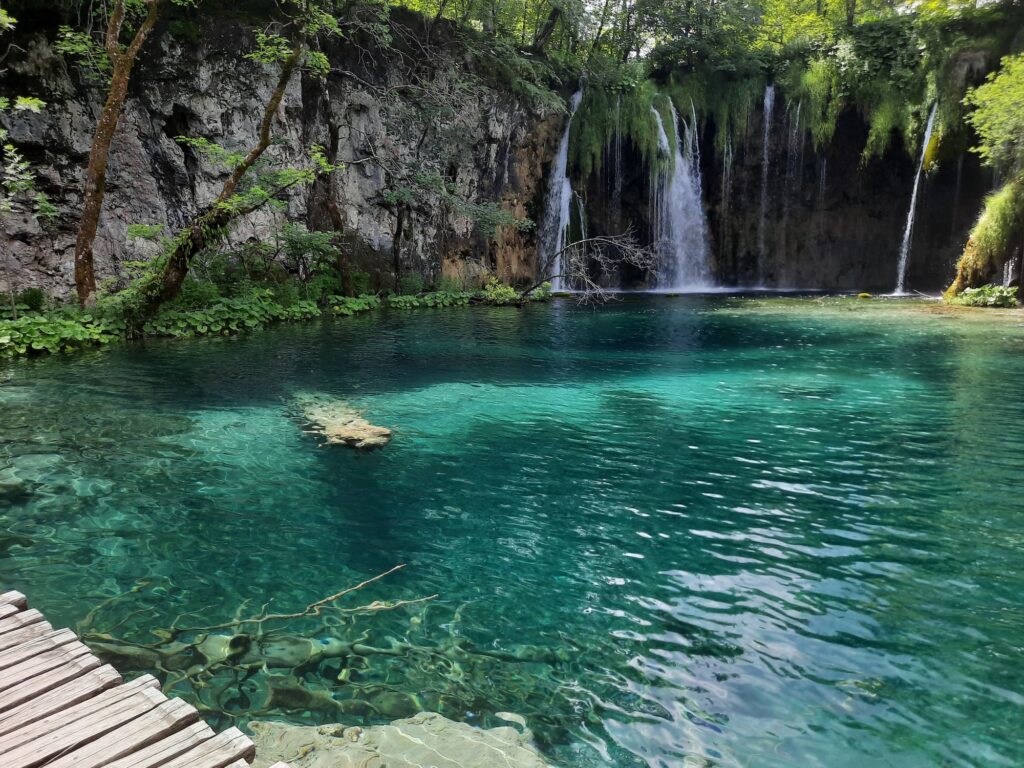
Krka National Park
Approximately 90 kilometers south of Plitvice lies Krka National Park, named after the Krka River. Covering an area of 109 square kilometers, Krka features a unique blend of natural and cultural heritage. The top attraction is Skradinski Buk, a massive waterfall located near the Lozovac entrance—perfect for swimming in designated areas during the high season. Scenic boat tours run from Skradin to the islet of Visovac, home to a 15th-century Franciscan monastery and a library containing rare manuscripts.Wooden paths stretch across marshes and riverbanks, ideal for birdwatching and educational walks. The Roški Slap waterfall and Krka Monastery, dating to the early Orthodox Christian period, add historical depth to your visit. Spring and early autumn are the best periods, offering mild temperatures and vibrant nature without the heavy summer traffic.
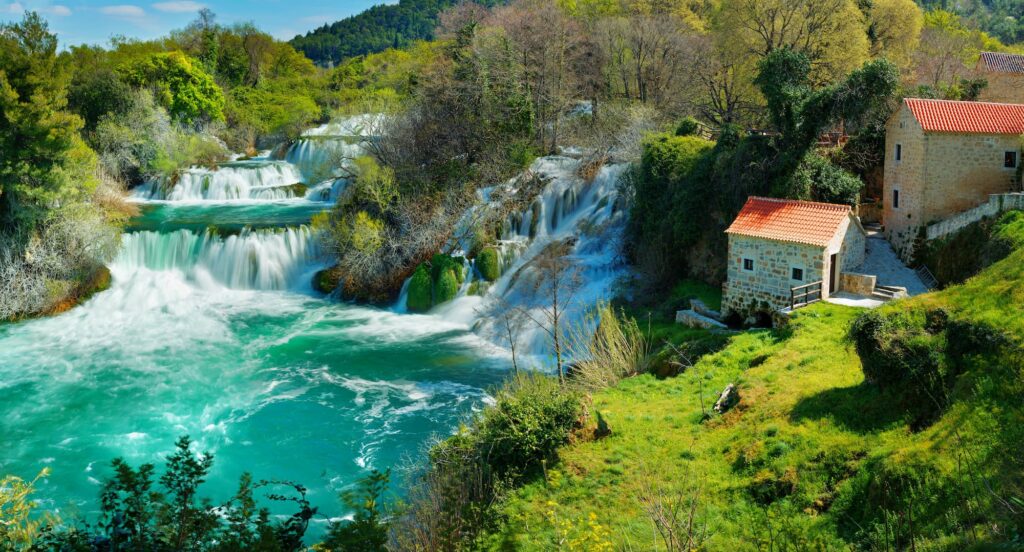
Mljet National Park
Located on the western half of Mljet Island, Mljet National Park is one of the most enchanting destinations along the Dalmatian Coast. Established as a national park in 1960, it spans about 54 square kilometers and is dominated by two saltwater lakes—Veliko and Malo Jezero—linked to the open sea via narrow channels. In the middle of Veliko Jezero lies the 12th-century Benedictine monastery on St. Mary’s Island, accessible via local tourist boats.Kayakers and paddleboarders are drawn to the calm, emerald waters, while bikers and hikers enjoy peaceful trails shaded by dense Aleppo pine forests. Adventure tourism in Croatia thrives here through low-impact, nature-based experiences. Thanks to strict visitor management, infrastructure developments remain limited, preserving serenity and purity. Access is easiest via ferry from Dubrovnik or the Pelješac Peninsula during summer months.
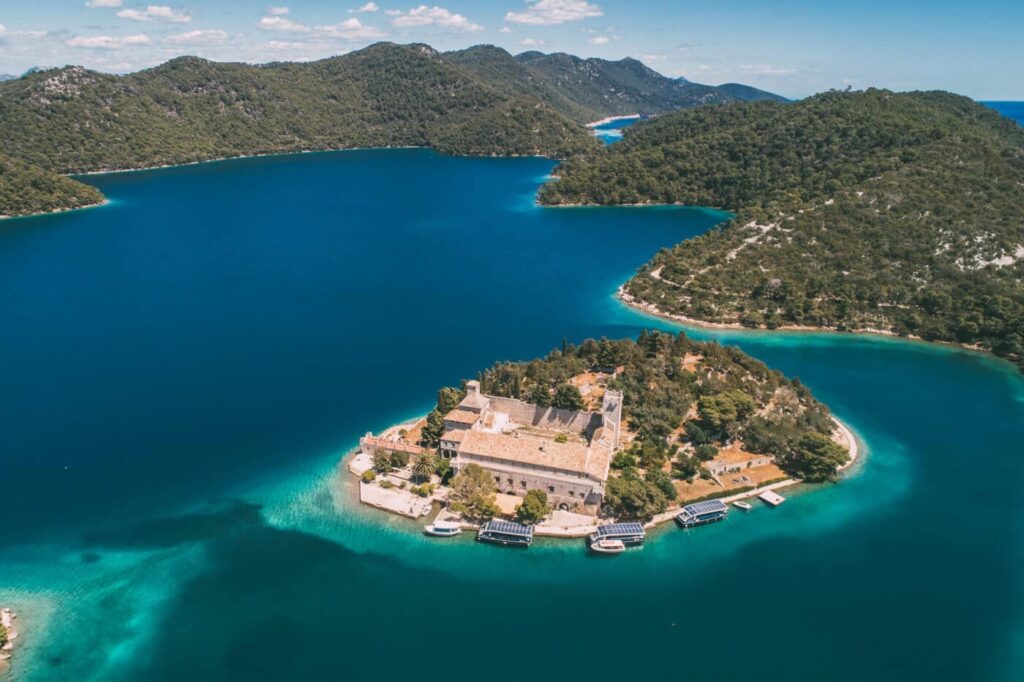
Discover top National Parks in Croatia.
Conservation and Sustainable Tourism
Croatia’s national parks are central to the country’s strategy for sustainable development and responsible tourism. Visitor numbers are regulated during peak seasons to prevent environmental degradation. Infrastructure such as elevated walkways, eco-education centers, and designated swim zones ensures minimal disruption to ecosystems. Programs for reforestation, native species monitoring, and waste reduction are supported by entrance fees and partnerships with research institutions.These protected areas play a fundamental role in Croatia’s eco-tourism appeal, combining outdoor recreation with environmental stewardship. Whether you’re hiking through ancient beech forests or kayaking across pristine lakes, national parks in Croatia offer unforgettable experiences that support biodiversity conservation and contribute to a greener tourism future.
Island Hopping Adventures along the Adriatic Coast
Island hopping adventures along the Adriatic Coast are among the most unforgettable experiences in Croatia. With over 1,200 islands, islets, and reefs scattered across crystal-clear waters, Croatia’s coastline is tailored for maritime exploration. Each island holds its own charm, culture, and story—offering a mosaic of unique activities in Croatia for travelers seeking both relaxation and thrill.
One of the top sailing destinations is Hvar, located in the central Dalmatian archipelago. Known for its sunny weather, Hvar hosts a lively nightlife scene centered around Hvar Town. The medieval Fortica Fortress offers sweeping views over Pakleni Islands, while the inland fields bloom with fragrant lavender from June to early July. For cultural enthusiasts, the 17th-century Arsenal and the historic St. Stephen’s Cathedral are not to be missed.
Brač Island, just north of Hvar, is a haven for adventure tourism in Croatia. The island is home to Zlatni Rat, one of the most photographed beaches on the Adriatic. Its unique V-shape shifts with wind and currents, making it ideal for windsurfing. Hikers can ascend Vidova Gora, the highest peak in the Croatian islands, at 778 meters above sea level, offering panoramic views from the summit.
Further out lies Vis, the most remote of the larger Dalmatian Islands. Untouched by mass tourism due to its past as a military base during the Yugoslav era, Vis is a sanctuary for serenity seekers. It features unspoiled bays, vineyards, and traditional stone villages. One of the top experiences in Croatia resides a short boat trip away—on Biševo Island—where the Blue Cave (Modra špilja) stuns visitors with ethereal blue light produced by sun rays bouncing through the sea entrance.
The best time for island hopping is between May and September. July and August draw the most visitors, while May, June, and September offer great weather with quieter harbors. Regular ferries and high-speed catamarans connect the islands, operated by companies like Jadrolinija and TP Line. For a more flexible and luxurious experience, private yacht charter in Croatia allow visitors to craft custom itineraries across the archipelago. Always check ferry schedules on official websites and book accommodations in advance, especially during summer peak.
With a mix of heritage, natural beauty, and sea-based exploration, island hopping delivers immersive experiences in Croatia. Whether trekking coastal trails, diving wrecks, or sipping wine in hidden coves, this region defines the heart of adventure tourism Croatia proudly offers.
Hiking Trails in Croatia: From Velebit Mountains to Učka Nature Park
Croatia offers some of Europe’s most diverse and untouched hiking opportunities, making it a hidden gem in adventure tourism. From limestone peaks in national parks to panoramic coastal lookouts, hiking trails in Croatia—from Velebit Mountains to Učka Nature Park—cater to casual walkers and seasoned trekkers alike.
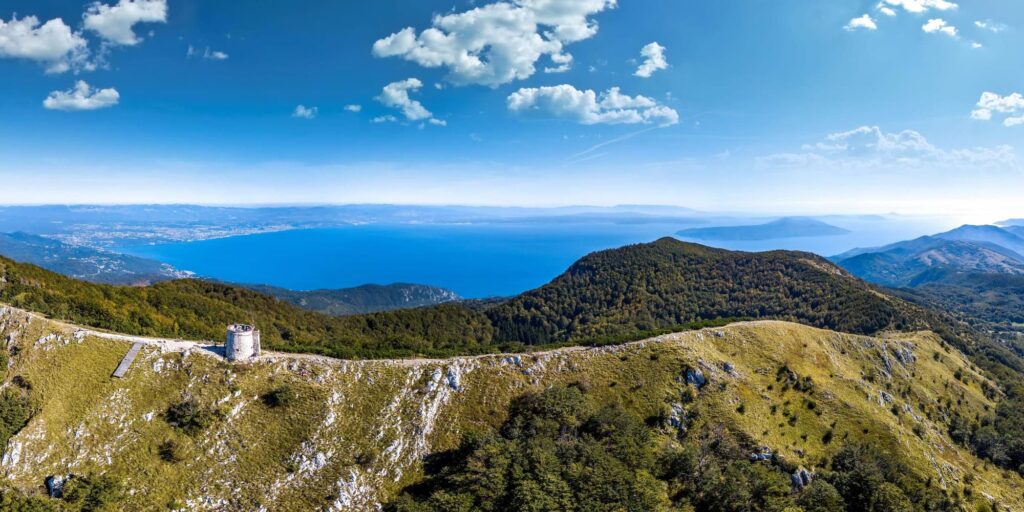
Velebit Mountains and Paklenica National Park
Located within the Dinaric Alps, the Velebit Mountains form Croatia’s longest mountain range, stretching over 145 kilometers along the Adriatic coast. Recognized as a UNESCO Biosphere Reserve, this area showcases alpine meadows, deep forests, and rugged cliffs teeming with endemic species like the Velebit degenia (Degenia velebitica), a rare flower found only in this region.
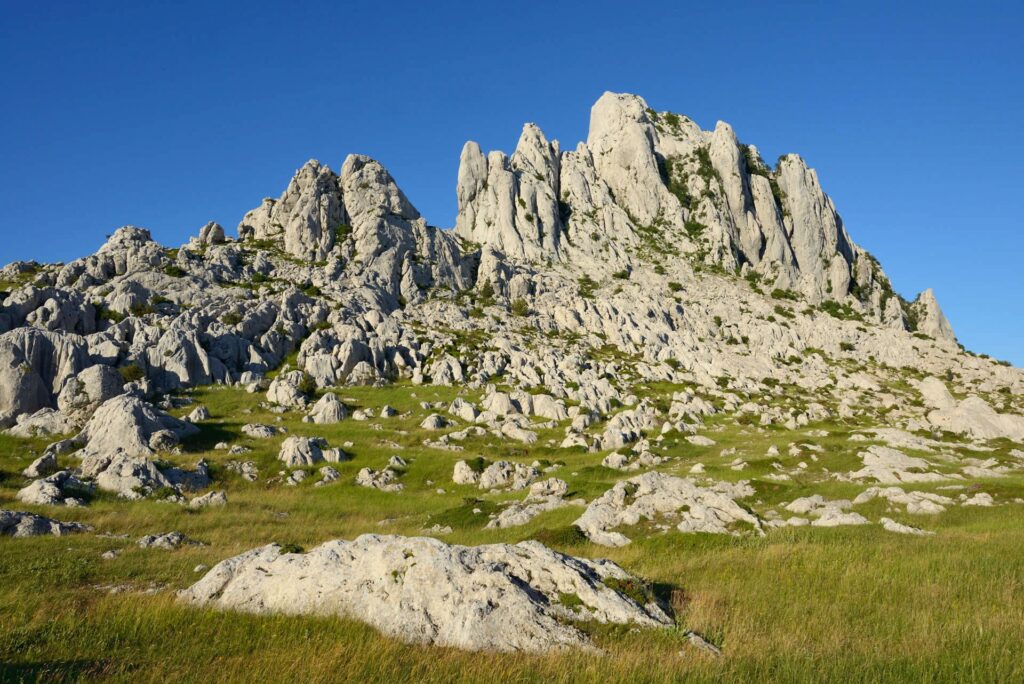
Paklenica National Park, part of the southern Velebit, is a standout destination for hikers. It hosts two primary canyons—Velika Paklenica and Mala Paklenica—both carved by centuries of water erosion. The Velika Paklenica trail, approximately 7 kilometers in length, leads to the Paklenica Mountain Hut and climbs over 400 meters in elevation through ancient black pine forests and karst terrain. More experienced hikers can explore the extended route to Vaganski Vrh, Croatia’s highest peak in the Velebit range at 1,757 meters. For narrow gorges and technical challenge, the Mala Paklenica canyon loop provides a more secluded, adventurous route.
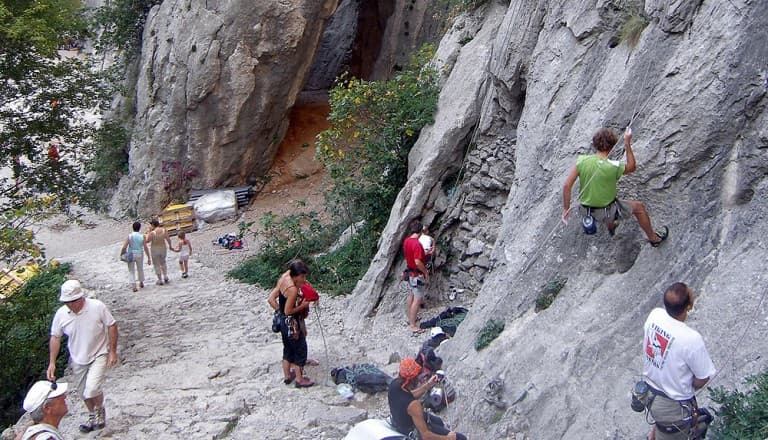
The park is also a global rock climbing hotspot and hosts the annual International Climbers’ Meeting in spring, drawing adventurers and mountaineers from around the world. Signposted routes and protected trails ensure safety while providing sweeping views of karst towers and turquoise rivers below. Guided eco-tours enhance the experience with insight into the park’s geology, wildlife, and wartime historical sites hidden in the forest.
Učka Nature Park and Vojak Peak
On the Istrian Peninsula, Učka Nature Park stands as a stunning example of coastal-meets-mountain environments. The Vojak trail, leading to the park’s highest point at 1,401 meters, rewards hikers with 360-degree views over Kvarner Bay, the islands of Cres and Krk, and even the peaks of the Italian Alps on clear days. Vojak’s summit hosts a historic Austro-Hungarian stone tower built in 1911, now open to visitors.
The park’s diverse microclimates allow for sightings of rare vultures, chamois, and over 1,300 plant species, including endemic Kvarner bellflowers. Aside from hiking, Učka is a hub for multi-sport adventure tourism in Croatia, offering mountain biking trails and seasonal paragliding from elevated ridges. Local associations also offer thematic tours, covering everything from botanical walks to geology-focused hikes.
These protected reserves reflect the Croatian commitment to conservation and promote sustainable activities in Croatia that highlight both its natural heritage and outdoor experiences. To ensure preservation and education, local parks recommend guided hikes through licensed eco-tour operators.
For official trail maps and guidance, visit Source.
Cultural Tours: Exploring UNESCO Heritage Sites like Diocletian’s Palace and Dubrovnik’s Walls
Exploring UNESCO heritage sites like Diocletian’s Palace and Dubrovnik’s Walls offers some of the most rewarding cultural experiences in Croatia. These historical landmarks don’t just showcase exceptional architecture—they reveal centuries of political, social, and artistic transformation across the Dalmatian coast.
Diocletian’s Palace in Split: A Living Roman Artifact
Built at the turn of the 4th century AD for the Roman emperor Diocletian, this sprawling palace covers over 30,000 square meters. More than a royal residence, it also served as a military fortress and housed a complete garrison. Today, it forms the historic core of Split.
The Peristyle Square, once the formal court entrance, remains the central gathering space. Towering stone columns and the imperial canopy still evoke its original grandeur. Adjacent to the square is the Cathedral of Saint Domnius, converted from Diocletian’s mausoleum. Its Romanesque bell tower offers sweeping views over Split.
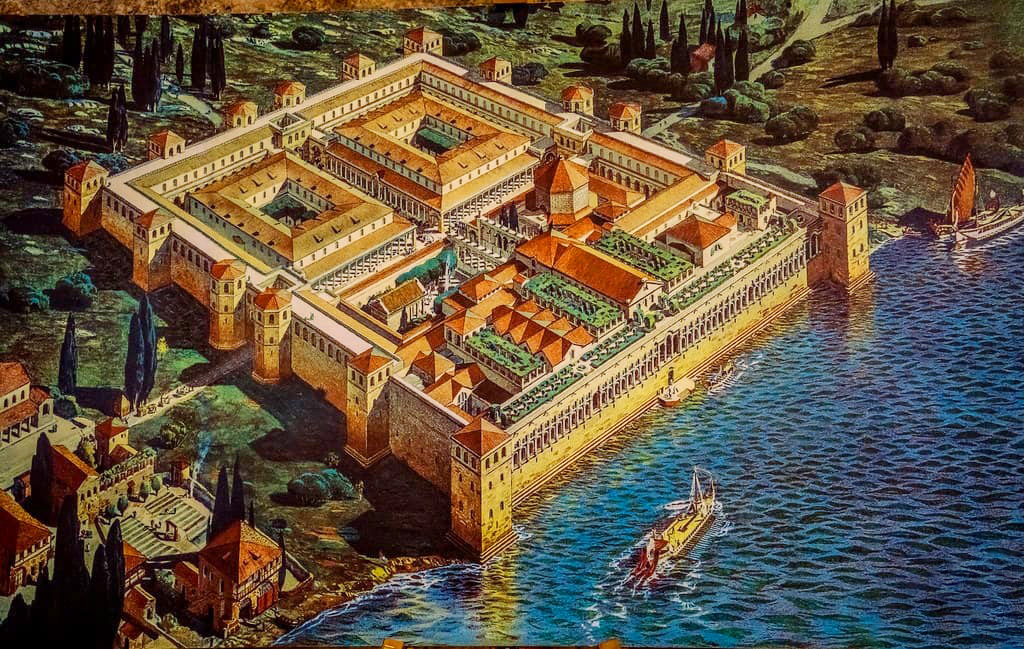
The palace’s substructures—preserved stone cellars—mirror the layout of the emperor’s private quarters above. These basements are among the best-preserved Roman ruins in the world and even served as filming locations for Game of Thrones. Visitors can now stroll through ancient corridors lined with artisan stalls and galleries. With cafes, boutiques, and apartments integrated throughout, this archaeological complex uniquely blends antiquity with modern urban life.
Dubrovnik’s Walls: Stone Sentinels of the Adriatic
Dubrovnik’s medieval walls, stretching nearly two kilometers, are among the largest and best-preserved fortification systems in Europe. Originally constructed in the 10th century and upgraded through the 13th to 16th centuries, they served to shield the Republic of Ragusa from naval and terrestrial threats.
Key highlights include Minčeta Tower, the highest point of the walls, offering panoramic views of the red-roofed Old Town and Adriatic Sea. The circular Bokar Fortress faces the sea, defending the Pile Gate and port. Lovrijenac Fortress, though separated from the walls, forms a vital part of the defense network.
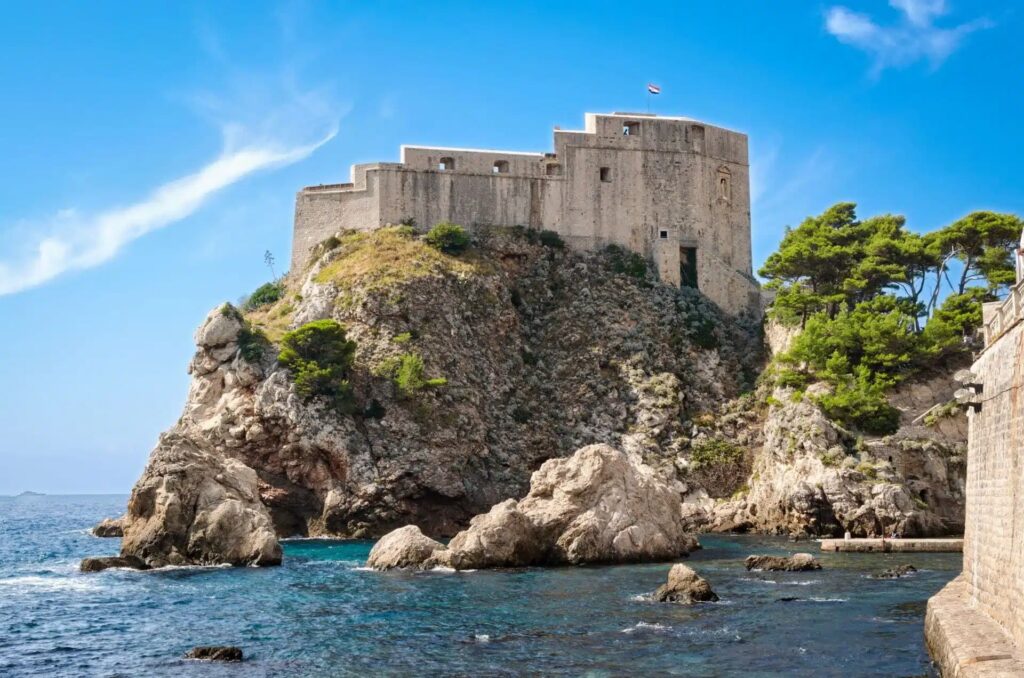
To avoid summer crowds, visit early morning or late afternoon. Admission fees vary by season, and the site is best explored clockwise for smoother navigation.
More UNESCO Experiences in Croatia
Don’t miss the UNESCO-protected towns of Trogir and Šibenik. Trogir showcases a Romanesque-Gothic ensemble in a tiny islet town while Šibenik’s St. James Cathedral is an architectural gem built entirely in limestone and marble. To get the most from these cultural tours, guided excursions are highly recommended, providing deeper context on medieval urban planning, sacred art, and Venetian-era influences.
For official UNESCO listing and historical details, visit the UNESCO World Heritage Centre.
Croatian Cuisine: Must-Try Dishes and Food Tours
Croatian cuisine: must-try dishes and food tours offer a flavorful journey through regional traditions shaped by centuries of outside influence. With roots in Mediterranean, Italian, Austro-Hungarian, and Ottoman kitchens, Croatia’s culinary landscape is diverse and deeply regional.
One essential dish to try is Peka. This Dalmatian specialty involves meat (or octopus), vegetables, herbs, and olive oil, all slow-cooked under a heavy domed lid covered with embers. The technique traces back to ancient hearths and creates a tender, smoky flavor profile. You’ll commonly find Peka in rustic konobas along the Dalmatian coast.
Ćevapi, a street food with Balkan origins, is another national favorite. These small sausage-like meat portions are typically grilled and served with warm lepinja (flatbread), raw onions, and ajvar, a red pepper-based relish. This dish is popular from Zagreb kiosks to seaside cafés.
Seafood lovers should not miss Black Risotto, or Crni Rižot. A hallmark of the Dalmatian coast, it is made with cuttlefish or squid and colored with ink. Its rich, briny flavor reflects Croatia’s deep connection to the Adriatic.
Also notable is Buzara, a method of preparing shellfish—especially mussels or scampi—in a simple sauce of garlic, white wine, parsley, and breadcrumbs. From Istrian taverns to Adriatic islands, this preparation showcases Croatia’s seafood purity.
Pašticada, a traditional dish from Split, is a beef stew marinated in vinegar and herbs, then slow-cooked in wine with prunes and root vegetables. Typically paired with handmade gnocchi, it’s a festive dish reserved for family celebrations and holidays.
For immersive experiences in Croatia, culinary walking tours in cities like Zagreb, Split, and Dubrovnik combine historic sites with tastings of local cheese, olive oil, chocolate, and cured meats. Foodies can also enjoy curated wine tours in Istria and the Pelješac Peninsula—home to robust reds like Plavac Mali and crisp white Malvazija—with expert guides endorsed by the Croatian National Tourist Board.
These gastronomic experiences in Croatia not only satisfy the palate but also serve as a gateway to understanding the country’s complex cultural mosaic.
Adventure Tourism in Croatia
With its dynamic coastline, rugged mountains, and crystal-clear Adriatic waters, adventure tourism in Croatia is perfect for thrill-seekers craving unique outdoor experiences.
Coastal adventures dominate the scene, especially beneath the surface. Scuba divers can explore ancient shipwrecks off the coast of Vis Island and underwater caves near Dubrovnik—some dating back to the Roman era. Kornati National Park, with its 89 scattered islands, offers pristine spots for snorkeling among colorful fish and coral formations. For travelers unfamiliar with diving, certified instructors provide training on-site, and equipment rental shops are available in most coastal towns.
Sea kayaking is another exhilarating way to explore the dramatic cliffs and historical sights. Paddling around the medieval walls of Dubrovnik at sunrise or sunset provides unmatched views of the UNESCO-listed Old Town. For longer maritime journeys, sailing excursions in Croatia reveal hidden coves, sea grottoes, and remote islands only accessible by boat. Many sailing tours depart from Split or Zadar and cater to different experience levels.
On land, Croatia’s karst terrain is ideal for rock climbing. Paklenica National Park, near Zadar, has over 400 marked climbing routes spanning different difficulties. The park’s Velika Paklenica canyon features steep limestone cliffs rising over 700 meters—perfect for seasoned climbers and beginners alike.
Mountain bikers can traverse the Velebit Mountains’ trails offering panoramic views of the Adriatic or head south to the Kamenjak Peninsula with coastal paths through pine forests and rocky cliffs. Both regions offer marked trails, bike rentals, and guide services.
When engaging in these activities in Croatia, ensure safety with proper travel insurance, certified local guides, and quality certified gear. Equipment rentals are widespread and often meet EU safety standards. Always check current local conditions and weather forecasts before setting out.
Additional Activities and Unique Experiences
Croatia’s rich heritage and vibrant culture offer more than scenic coastlines and adventure. For cultural experiences in Croatia, don’t miss the annual Dubrovnik Summer Festivals, active since 1950, transforming Renaissance streets into open-air stages for drama, ballet, and classical music. In contrast, Ultra Europe Music Festival in Split draws global electronic music lovers each July to Poljud Stadium, making it one of Europe’s top music events.
For those seeking wellness-oriented activities in Croatia, coastal towns like Opatija offer a legacy of health tourism since the 19th century. Visitors can enjoy sea salt therapy, thalassotherapy treatments, and hillside spas with Adriatic views. Wellness centers often feature traditional methods like aromatic herbal steam rooms and mineral mud wraps sourced from nearby sources.
Dive deep into Croatian culture at local markets. Zagreb’s Dolac Market, known as the “Belly of Zagreb,” has been operating since 1930 and offers seasonal fruits, handmade Licitar heart cookies, and fresh cheeses like paški sir. In Split, visit Green Market by the palace walls to explore stands of lavender oil, wild asparagus, and embroidered linens. Buying directly supports local farmers and artisans, sustaining a centuries-old marketplace economy focused on authenticity and sustainability.
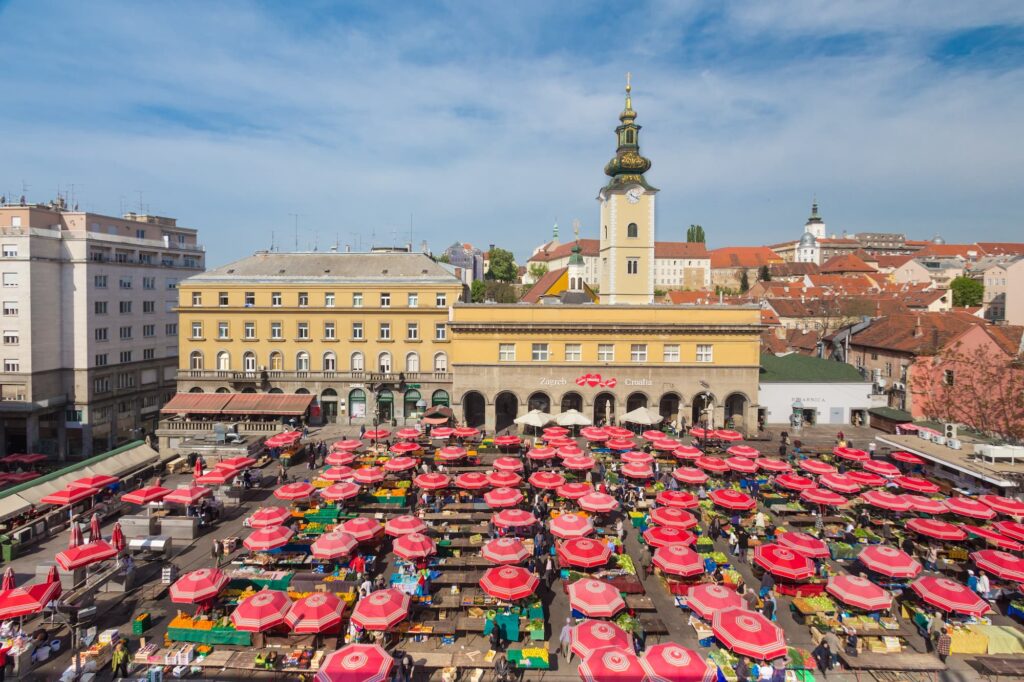
These distinctive experiences in Croatia give travelers vivid insight into everyday life and deep-rooted traditions.
Practical Information for Planning Your Trip
Croatia’s peak travel season runs from June to August, ideal for coastal activities in Croatia like yachting, beach hopping, and sea kayaking. Expect warm Mediterranean weather along the Adriatic, with daytime temperatures averaging 28°C (82°F). The shoulder months—May and September—offer milder temperatures, lower prices, and smaller crowds, perfect for exploring inland experiences in Croatia such as hiking in Plitvice Lakes or visiting medieval towns like Varaždin.
The coast enjoys a sunny Mediterranean climate, while central and eastern regions have a temperate continental climate with colder winters and occasional snow. Zagreb, for example, can drop to -1°C (30°F) in January, unlike Split which remains mild.
Getting around is convenient with a national bus network, Jadrolinija ferries between over 50 inhabited islands, and domestic flights linking major cities. For maximum flexibility, consider renting a car to explore untouched villages and winding coastal routes like the Makarska Riviera.
Accommodation ranges from five-star hotels in Dubrovnik to agrotourism stays in Istria that offer homemade olive oil and fresh truffles. Budget travelers can find private rooms from €30/night. Meals average €15–€25 and intercity bus tickets are around €10–€20.
Croatia, part of the Schengen Area since 2023, uses the Euro (€). EU and many other passport holders can enter visa-free for 90 days.
Conclusion
From sailing the sapphire waters of the Adriatic to discovering Roman ruins in Pula, the range of activities and experiences in Croatia is vast and unforgettable. Hike across Plitvice Lakes’ misty waterfalls, taste truffle-infused delicacies in Istria, or island-hop through Hvar, Brač, and Korčula. Whether you’re chasing cultural treasures, local gastronomy, or adrenaline-filled water sports, Croatia delivers timeless adventures. Each coastal village and inland valley reveals another story waiting to be lived.
Ready to create your own Croatian journey? Share this guide, explore more with viravira.co, and connect with us to plan the ultimate Mediterranean escape.
| Category | Details |
| Location | Croatia – a Mediterranean destination nestled between Central and Southeast Europe, boasting over 1,200 islands, dramatic coastlines, and an impressive blend of natural and cultural heritage. |
| Best Time to Visit | May & September for quieter inland and national park experiences; June–August for ideal beach, island hopping, and coastal activities; early spring and late autumn optimal for waterfall vigor in parks. |
| Main Attractions | UNESCO sites like Plitvice Lakes, Diocletian’s Palace, Dubrovnik’s Walls, and historic towns such as Trogir, Šibenik, along with eight spectacular national parks (Krka, Mljet, Velebit, Paklenica, Učka). |
| Outdoor & Adventure | Hiking (Velebit Mountains, Učka Nature Park, Paklenica trails), sea kayaking around Dubrovnik, rock climbing, scuba diving among ancient shipwrecks, sailing excursions, and mountain biking. |
| Cultural & Historical Experiences | Exploration of medieval cities, Roman ruins, monasteries, fortified walls, captivating cultural festivals such as the Dubrovnik Summer Festival and Ultra Europe Music Festival. |
| Culinary Highlights | Local specialties such as Peka, Ćevapi, Black Risotto, Buzara, and Pašticada; immersive food tours, local wine tastings, and market visits showcasing traditional Croatian flavors. |
| Conservation & Sustainability | National parks managed with a focus on eco-tourism, biodiversity conservation, sustainable visitor access, and environmental stewardship programs. |
| Practical Information |
|
| Additional Experiences | Annual festivals, wellness spas in Opatija, vibrant local markets (e.g., Zagreb’s Dolac Market), and unique island experiences that blend relaxation with adventure. |
FAQs
Croatia boasts eight stunning national parks, including Plitvice Lakes and Krka, known for their breathtaking waterfalls and diverse wildlife. These parks are a paradise for nature lovers, offering well-preserved ecosystems and eco-tourism opportunities.
Island hopping in Croatia is a top experience with over 1,200 islands to explore. Highlights include Hvar for its vibrant nightlife and lavender fields, and Vis for its tranquil bays and Blue Cave. The best time for island adventures is May to September, with regular ferries connecting the islands.
Croatia offers diverse hiking trails, such as the Velebit Mountains and Učka Nature Park. These areas provide routes for both casual hikers and seasoned trekkers, featuring stunning landscapes and rich biodiversity.
History enthusiasts will love exploring UNESCO sites like Diocletian’s Palace in Split and Dubrovnik’s Walls. These landmarks offer a deep dive into Dalmatia’s rich architectural and historical heritage.
Croatian cuisine is diverse, featuring Peka, a slow-cooked dish with meat or octopus, and Black Risotto made with cuttlefish ink. Food tours in Split, Dubrovnik, and Zagreb allow travelers to sample these and more local delights.
Croatia’s adventure tourism includes scuba diving among ancient shipwrecks, rock climbing in Paklenica, and sea kayaking around Dubrovnik’s medieval walls. These exhilarating activities offer unique ways to explore Croatia’s natural beauty.
Visitors can enjoy Croatia’s cultural events like the Dubrovnik Summer Festival, engage in wellness treatments in Opatija, or browse vibrant markets like Zagreb’s Dolac Market for local artisan goods and fresh produce.

